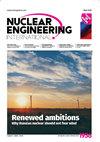Application of Convolution Neural Network for Digital Image Processing
IF 0.6
4区 工程技术
Q4 Engineering
引用次数: 2
Abstract
In order to train neural network algorithms for multiple machine learning tasks, like the division of distinct categories of objects, various deep learning approaches employ data. Convolutional neural networks deep learning algorithms are quite strong when it comes to image processing. With the recent development of multi-layer convolutional neural networks for high-level tasks like object recognition, object acquisition, and recent semantic classification, the field has seen great success in this approach. The two-phase approach is frequently employed in semantic segregation. In the second step of becoming a standard global graphical model, communication networks are educated to deliver good local intelligence with a pixel. Convolutional Neural Networks (CNN or ConvNet) are complicated neural server networks in the field of artificial intelligence. Because of their great accuracy, convolutional neural networks (CNNs) are frequently utilized in picture categorization and recognition. In the late 1990s, Yann LeCun, a computer scientist, was based on the human notion of cognition and came up with the idea. When constructing a network, CNN uses a hierarchical model that eventually results in a convolution layer in which all neurons are linked and output is processed. Using an example of an image processing application, this article demonstrates how the CNN architecture is implemented in its entirety. You can utilize this to better comprehend the advantages of this current photography website.卷积神经网络在数字图像处理中的应用
为了训练神经网络算法来完成多个机器学习任务,比如对不同类别的对象进行划分,各种深度学习方法都使用了数据。卷积神经网络深度学习算法在图像处理方面非常强大。随着最近多层卷积神经网络在高级任务(如对象识别、对象获取和最近的语义分类)中的发展,该领域在这种方法上取得了巨大的成功。语义分离通常采用两阶段方法。在成为标准的全球图形模型的第二步中,通信网络被训练为通过像素传递良好的局部情报。卷积神经网络(CNN或ConvNet)是人工智能领域中较为复杂的神经服务器网络。卷积神经网络(convolutional neural networks, cnn)由于其极高的准确率,被广泛应用于图像分类和识别。上世纪90年代末,计算机科学家扬·勒昆(Yann LeCun)基于人类的认知概念提出了这个想法。在构建网络时,CNN使用分层模型,最终形成一个卷积层,其中所有神经元都被连接起来并对输出进行处理。本文使用一个图像处理应用程序的示例,演示了如何完整地实现CNN架构。你可以利用这一点来更好地理解这个当前摄影网站的优势。
本文章由计算机程序翻译,如有差异,请以英文原文为准。
求助全文
约1分钟内获得全文
求助全文
来源期刊

Nuclear Engineering International
工程技术-核科学技术
自引率
0.00%
发文量
0
审稿时长
6-12 weeks
期刊介绍:
Information not localized
 求助内容:
求助内容: 应助结果提醒方式:
应助结果提醒方式:


